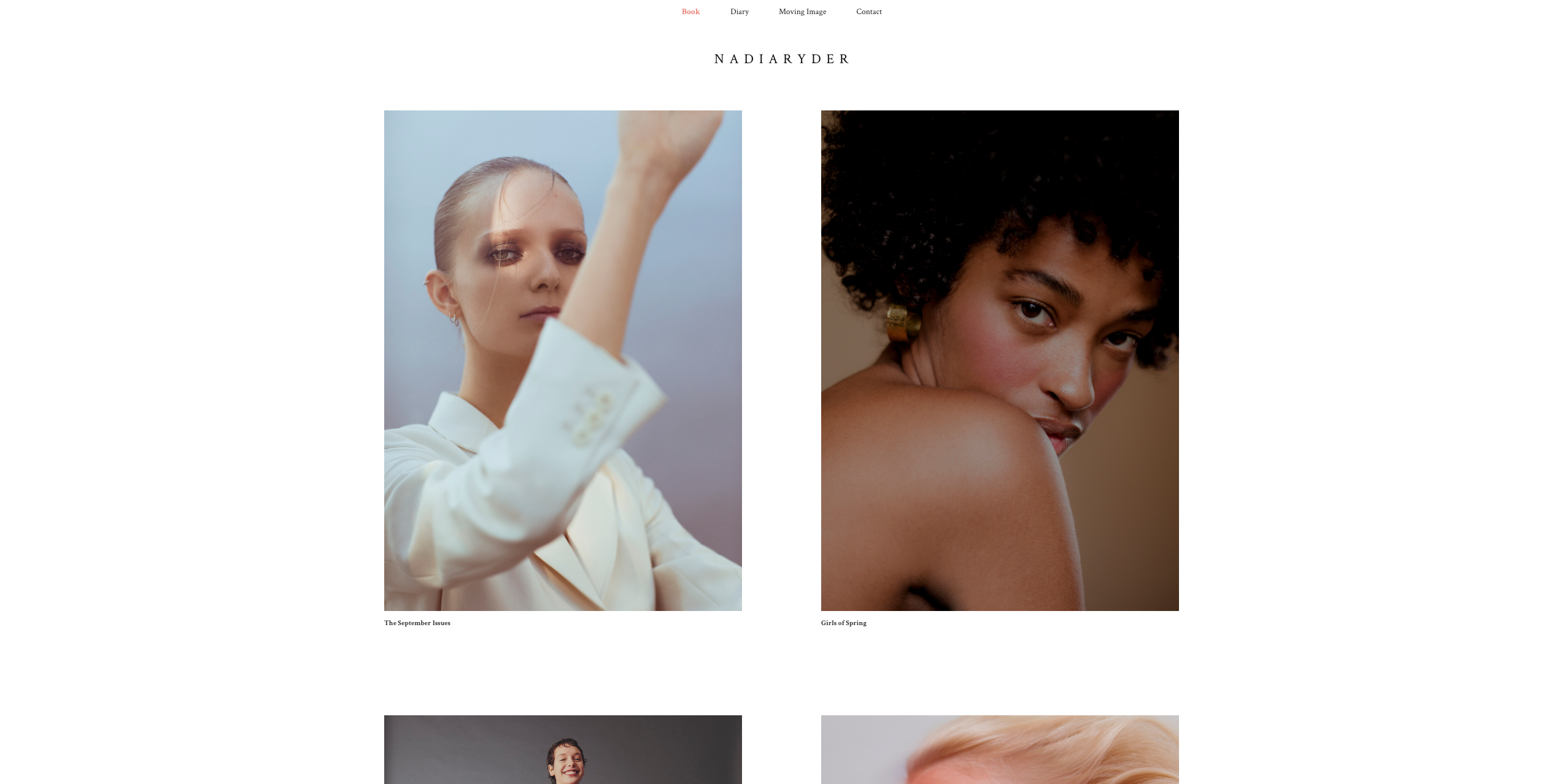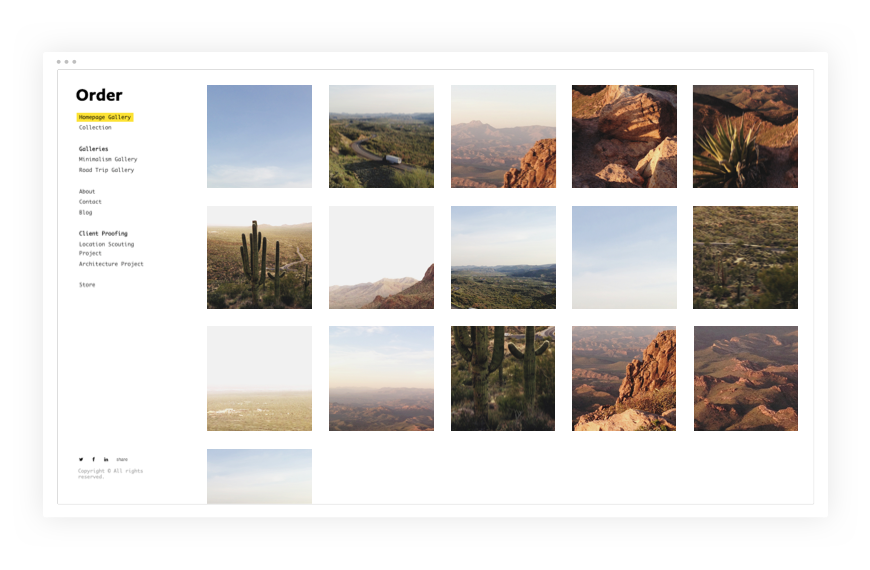Education
How to Make Your Photography Portfolio More Professional
By Guest Author - 4 min read
Presenting your work well could be the best tool for making your work stand out and catching the eyes of potential clients. In this guest post, the team at Format share their insights on the key elements of a professional creative portfolio.
A portfolio is best known as a structured display of work that’s designed to establish credibility for an artist. However, with the rate of content production and consumption only increasing, your ability as a photographer to create a unique and dynamic portfolio could be what sets you apart.
Making your portfolio more professional does not mean less creative. The team at Format tells you how to make your photography portfolio more professional with just a few simple steps.
Format’s Guide to Creating a Professional Portfolio That Will Set Your Work Apart
1. Define Your Portfolio Style
Your portfolio should be designed to display creative work rather than detract from it. The first step toward achieving this is deciding which visual context or frame best presents your work.
When you think about how you want your work to be perceived, what are the first three words that come to mind?

If words such as clean, minimal and futuristic come to mind when you think of your work, your portfolio layout could look something like Nadia Ryder’s. With the editorial aesthetic achieved through a simple yet strong portfolio theme, it’s clear from the first glance the quality and feel of Nadia’s visual style.
On the other hand, if you’re looking to specialize in real estate, photography could be better suited to a portfolio with a warmer color palette and a broader range of work displayed, such as Format’s portfolio theme - Order.

Using a customizable template may seem like it’s less creative, however it can make this first step a fair bit easier. You are able to achieve a professional design without having to build one from scratch, meaning you have more time to add the personal elements you want to.
Tip: Format are offering all EyeEm Creators 20% off! Take a look at their collection of online templates, find one that suits your visual style, and use the code EYEEM at the checkout to make it your own!
2. Tell Your Story
What kind of story do you want your portfolio to tell? Just like all other stories, your portfolio should have a beginning, middle and an end.
People tend to remember the first and last piece of information they’re given, and therefore it’s critical to start and finish your portfolio with your strongest content. However, you can’t dismiss the rest. Every piece in-between should carry its weight in helping you tell your story.
Including too many photos across genres can dilute your credibility as a specialist. For example, if you’re looking to specialize as a wedding photographer, try to include your recent event photography only to accentuate your skills. If you want to work with a number of different projects and photography styles, you could try having a unique portfolio for each genre, or incorporating different web pages on your portfolio.
Other online platforms where you display your work - such as your EyeEm profile - serve as satellite portfolios that a client may stumble upon before searching for your full portfolio. Just like your portfolio, your EyeEm Profile should tell your clients what type of photographer you are.
For example, Fashion and Portrait photographer Hanna Postova has created a strong visual story running through her image collection. It’s important to consider not only your portfolio as a single asset, but how other platforms can support your story.
3. Decide Your Artistic Presence
As an artist, you have the choice of how much your want to be involved in the presentation of you work. Some photographers like to take a macro approach and closely align themselves with their work – often disclosing more information about themselves and their technique on the website, and at times providing a narrative for different pieces of their work. This method allows visitors to feel a sense of familiarity and transparency about the photographer.
Other artists prefer to have a much more covert and subtle presence in their portfolio. For example, Nadia Ryder takes this approach with her portfolio. In some ways, this is a great way of providing the virtual space for your work to speak for itself.
Both approaches are professional, but it’s important to be consistent once you have selected your approach.
4. Find The Right Amount of Variety
Keeping your portfolio up to date seems simple. However, in practice, it can be difficult to make time to integrate your latest work when you may already have client emails, photo editing, tutorials and other responsibilities on your plate. This being said – having out of date work on display can serve as a red flag to your potential clients as it implies you are less in demand than you actually are.
A good way to strike this balance is to feature a rotating series of your latest work to demonstrate that you’re currently active in the industry, along with a selection of photographs you’re most proud of that serve as a static backbone of your portfolio.
5. Test the Content Flow
An online portfolio is your own permanent exhibition and it’s critical that you approach it with the same attention to detail.
Think of how many steps are involved in displaying a single photograph in a gallery – size, lighting, backdrop, framing, fixtures and other work surrounding it. Be sure to evaluate how the pieces flow together to tell a cohesive story, while also being mindful of showing a wide range of unique pieces.
The balance can be tricky to achieve. Therefore, feedback is critical. By asking people who are not familiar with your work, or the stories behind it to review the flow of your work - both from a visual and conceptual perspective - will give you a great overview of any gaps or repetition that you may not see.
6. Establish The Right Length
The amount of work you include in your portfolio should be dependent on what your portfolio is trying to achieve. Your portfolio may need to sell your skills, or may be a tool for creating intrigue in your work and leave more for interpretation.
The size of your portfolio may also be dictated by the type of photography. For example, if you specialize in commercial photography, it’s not uncommon to have a lengthy and robust portfolio.
A good way of figuring out what’s expected in your area of specialization is to look around. Find portfolios from photographers near you that are creating similar work. Alternatively, you can do an audit of the ‘best in class’ portfolios on a global level as a way to give your own portfolio an edge. Simply check off the same boxes they have to stay competitive, or try doing something none of them have to make your portfolio stand out.
7. Don’t Dismiss Attention to Detail
Attention to detail can make or break a professional portfolio. A good first impression is incredibly important. Your potential clients expect a portfolio that has polished spelling, grammar and visuals. Your portfolio is designed to communicate not only your practical skills and passion but also your professionalism.
It’s these elements that clients will expect you to bring to any project you work on with them, and should be clear throughout your portfolio.
Building a professional portfolio can be a challenge, but these key principles should keep you on track as your work develops and you continue to shoot. Making your portfolio more professional is dependent on your ability to pay attention to the details and understanding what you want your portfolio to achieve.
Take a look here to discover the right template for you and your visual style. Plus get 20% off with the code EYEEM.
